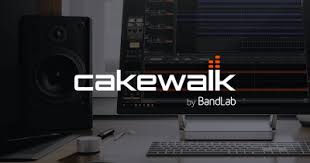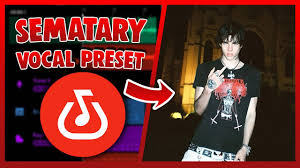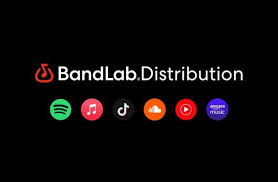AI-generated music isn’t just a futuristic idea anymore — it’s already reshaping how music is made, especially by creators who use simple text prompts to create fully produced songs. So if you’ve been asking yourself, “What is the AI that makes music from prompts?”, you’re not alone.
In 2025, several powerful AI tools can generate full instrumentals, vocals, lyrics, and even mixing — all from short descriptions like “a dreamy synth-pop track with female vocals about space travel”. Let’s break down the leading platforms, how they work, and what creators should know.

The Short Answer: What Is the AI That Makes Music from Prompts?
The most advanced AI that makes music from prompts today includes tools like:
Suno AI
Udio
Boomy
Soundful
Mubert
Each of these platforms lets users input text prompts describing mood, genre, theme, and instrumentation. The AI then generates music in real-time — often including vocals, lyrics, and multiple versions.
These tools are used by indie creators, marketers, podcasters, game developers, and even signed artists.
1. Suno AI – Text-to-Song Made Simple
Suno AI is currently one of the most talked-about tools for making music from prompts. You can type in a short idea — like “melancholic indie rock song about loneliness in space” — and Suno generates a 1- to 2-minute fully produced song with vocals and lyrics in under a minute.
Key Features:
Supports prompts for theme, style, mood, tempo
Includes realistic AI vocals (male/female)
Generates lyrics and harmonies automatically
Perfect for song demos, TikTok audio, or ideation
Suno is ideal for users who don’t play instruments but want to express musical ideas quickly. It’s also useful for social media creators and ad agencies that need royalty-free audio fast.
2. Udio – High-Quality AI Tracks from Descriptions
Udio is another top-tier platform offering AI music generation based on written prompts. It’s slightly more customizable than Suno and appeals to users looking for more control over structure, key, or style.
What sets Udio apart:
Clean, professional-grade audio
Genre-specific prompts like “lo-fi chill beats” or “early 2000s pop-punk”
Extended song length with variations and multiple vocals
Used by YouTubers, filmmakers, and experimental musicians
If you want radio-ready tracks generated from a few keywords, Udio delivers. It also supports remixing or regenerating parts of a song you didn’t like.
3. Boomy – Create Songs in Seconds with AI
Boomy has been around longer than most AI music tools and is known for its beginner-friendly interface. It’s perfect for people who want to make music casually — and even publish it to Spotify.
Boomy Highlights:
Choose a style (e.g., ambient, trap, EDM), then hit “Create”
Add vocals (your own or synthetic)
Allows prompt-style input to tweak mood or story
Monetization built-in: You can release songs to streaming platforms
Boomy is especially popular with non-musicians, meme creators, and mobile-first users. It’s less flexible than Suno or Udio, but faster and easier to start.
4. Soundful – AI Beat Maker for Creators
While Soundful is less focused on text prompts than Suno or Udio, it still offers prompt-like controls. You choose genres, moods, and energy levels to generate royalty-free instrumentals for content, podcasts, or ads.
Best Use Cases:
Background music for YouTube or Reels
Custom beats for singers or rappers
Electronic loops for DJs and producers
Soundful doesn’t generate vocals or lyrics, but it’s great for beat-driven music production.
5. Mubert – Prompt-Based Music for Commercial Use
Mubert combines text prompts with generative music AI to create endless, royalty-free background tracks. It’s built for content creators and brands that need audio without licensing issues.
You type something like “calm corporate background with soft piano”, and Mubert builds a streamable or downloadable track.
What Makes Mubert Unique:
Continuous music generation (loop-friendly)
Royalty-free for commercial projects
Great for app developers, product videos, meditation channels
It’s not ideal for songwriting, but excellent for background and BGM use cases.
How Do These AI Tools Work?
At the core, these platforms rely on large AI models trained on thousands of hours of music across styles. They use:
Natural language processing (NLP) to interpret your text prompt
Generative music models (sometimes transformer-based) to predict what music structure best fits
AI vocal synthesis for singing voices and harmonies
Style transfer to match known genres or artists
In some cases, the AI is even trained to write rhyming lyrics and align them to beats — effectively composing a full song from scratch based on just a few words you type.
Why Prompt-Based AI Music Is Gaining Popularity
The growing demand for AI music tools is driven by several trends:
Speed: Traditional music production can take days or weeks. AI does it in minutes.
Accessibility: No need for instruments, DAWs, or studio equipment.
Affordability: Many tools are free or offer low-cost plans.
Creative experimentation: Artists can test new ideas without hiring a team.
Content demand: Video creators need fresh, royalty-free music fast.
Are There Limitations?
Yes. While AI music from prompts is improving fast, there are a few caveats:
Lack of deep emotion: AI still struggles to replicate nuanced human expression.
Limited control: Most tools don’t allow full editing of structure or vocals.
Repetitiveness: Some AI outputs can feel generic if overused.
Ethical concerns: Use of AI voices or cloned styles raises legal questions.
That said, these tools are excellent for prototyping, ideation, and content soundtracks.
Conclusion: The Future of Prompt-Based AI Music
If you're asking “What is the AI that makes music from prompts?”, the short answer is: Suno, Udio, Boomy, Soundful, and Mubert — and they’re revolutionizing music creation.
Whether you’re a TikTok creator needing a catchy hook, a small business making Instagram ads, or a songwriter looking for a draft to refine, these AI tools give you speed, scale, and creative freedom.
But as with any tool, they work best when guided by human vision. The AI can generate the music — but your prompt is the spark.
FAQs
Q1: Can AI really make a full song from a short prompt?
Yes, tools like Suno and Udio can generate full songs with vocals, lyrics, and structure from a simple description in less than a minute.
Q2: Which AI tool is best for text-to-music?
Suno AI is currently one of the most advanced and popular for creating complete songs from prompts. Udio is another strong choice with more customization.
Q3: Can I use AI-generated songs commercially?
It depends on the platform. Mubert and Soundful offer royalty-free options, while Suno and Udio have different licensing tiers.
Q4: Does AI music sound human?
In many cases, yes. Vocals generated by tools like Suno can sound surprisingly natural, especially in pop or hip-hop genres.
Q5: Is AI music replacing human musicians?
Not exactly — it’s augmenting creativity and making music production more accessible. But concerns about fair credit and compensation are growing.
Learn more about AI MUSIC








